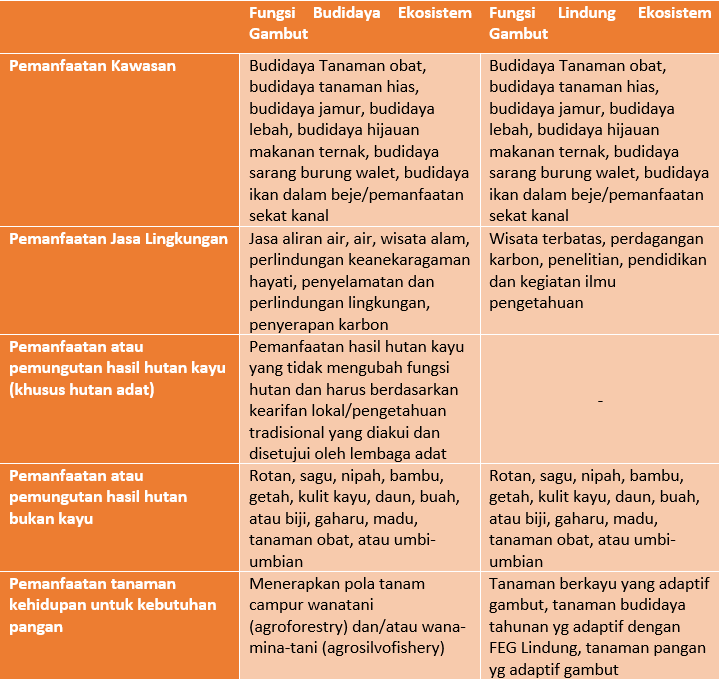The Ministry of Environment and Forestry issued Ministerial Regulation no. P.37/MENLHK/SETJEN/KUM.1/7/2019 concerning Social Forestry on Peat Ecosystems. This legal instrument describes in detail the Social Forestries activities on peatlands. The regulation was previously drew criticism because it was contrary to the commitment to protect peatlands as stated in Government Regulation Number 71 of 2014 concerning Protection and Management of Peat Ecosystems as amended by Government Regulation Number 57 of 2016. This regulation explains that the determination of peat areas for social forestry activities refers to the Peat Ecosystem Function (FEG) map, the peat dome peak map, the hydro-topographic map, and the Indicative Map on the Suspension of the Issuance of New Permits (PIPPIB).
This regulation explains in detail 4 of the 5 Social Forestry schemes (according to P.83/MENLHK/SETJEN/KUM.1/10/2016) that can be implemented on top of the cultivation and conservation functions of the peat ecosystem. The 4 schemes are:
- Village Forest (HD) with Village Forest Management Rights (HPHD) tenure
- Community Forest (HKm) with a Business License for the Utilization of Community Forest (IUP HKm)
- Forestry Partnership (KK) between local communities and forest managers, holders of business license for the utilization of forest/forest services, permit for borrowing and using forest areas, or business license for forest product primary industry
- Customary Forests (HA) whose tenure is under the territory of customary law communities.
The following is a summary of activities in each Social Forestry scheme (HD/HKm/KK/HA) that can be carried out in the cultivation and conservation functions of the peat ecosystem:

Social forestry activities carried out in cultivation or conservation areas must preserve the peat by:
- Not reducing, changing, or eliminating the main functions of the peat ecosystem
- Limited land management
- Not causing negative biophysical and socio-economic impacts
- Not using mechanical equipment in land management
- Continuing to pay attention to peatland restoration and protection
- Paying attention to the suitability and carrying capacity of the peat ecosystem
Moreover, this regulation also confirms the points of peat protection which refers to the Government Regulation Number 71 of 2014 in conjunction with Government Regulation Number 57 of 2016, which include the prohibition to:
- Clear new land by clear-cutting;
- Construct canals on peat ecosystem landscapes;
- Create drainage channels that cause peat to dry out;
- Burn peatlands and/or allow burning to occur; and/or
- Carry out other activities that exceed the standard criteria for damage to the Peat Ecosystem.